Computer numerical control (CNC) is programmed code addressing guidelines for precise movements done by machines.
CNC machines are machines that change raw materials into objects by either adding or eliminating them. However the term is frequently used to allude to routers, “CNC machines” additionally incorporate 3D printers and laser-cutting devices.
Arduino CNC shields are a fundamental part of the whole process. Arduino is an extremely well-known microcontroller board, which implies it is ready to read and write electrical signals. They can be modified through USB to control any hardware project, including CNC machines.
How Do Arduino CNC Shields Work?
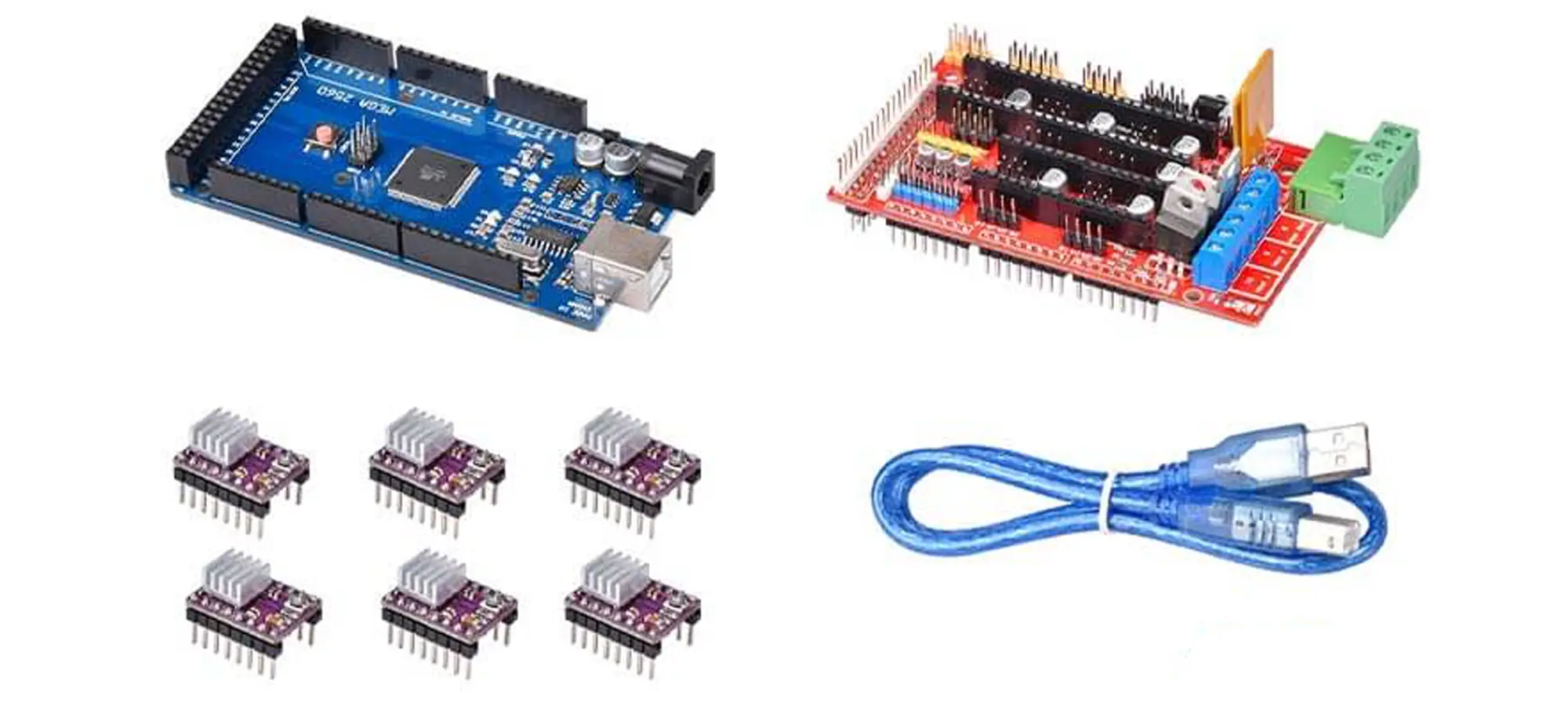
Arduino CNC machines give an Arduino microcontroller the force important to drive stepper engines and run a wide range of various functions that add to a CNC machine’s activity. Contingent upon the shield, this could include end stops, spindle speed control, and probing.
Shields vs. Controllers
Many people prefer to use an Arduino shield over a devoted CNC controller due to its customizability and often open-source plan.
In case you are searching for a CNC shield, it is useful to have at least a rough idea of what you need your completed machine to be able to do. A CNC shield ought to consistently have the option to control no less than three stepper drivers, however, some can drive at least four.
Arduino CNC shields are usually a lot less expensive option for controlling a CNC machine than a dedicated CNC controller. The cost for a CNC shield can go from $15 (counting an Arduino) for open-source Chinese clones and up to $160 for deluxe name brand choices.
In this article, we will cover a couple of the most well-known shields and clarify their differences and features. Overall, we need to go over what to search for in a shield.
Let’s see what we need.
Note: The initial three boards on the list don’t have coordinated stepper motor drivers and rather use StepStick format drivers that can be connected to the board and interchanged.
ARDUINO CNC SHIELDS
Open-Source V3.51
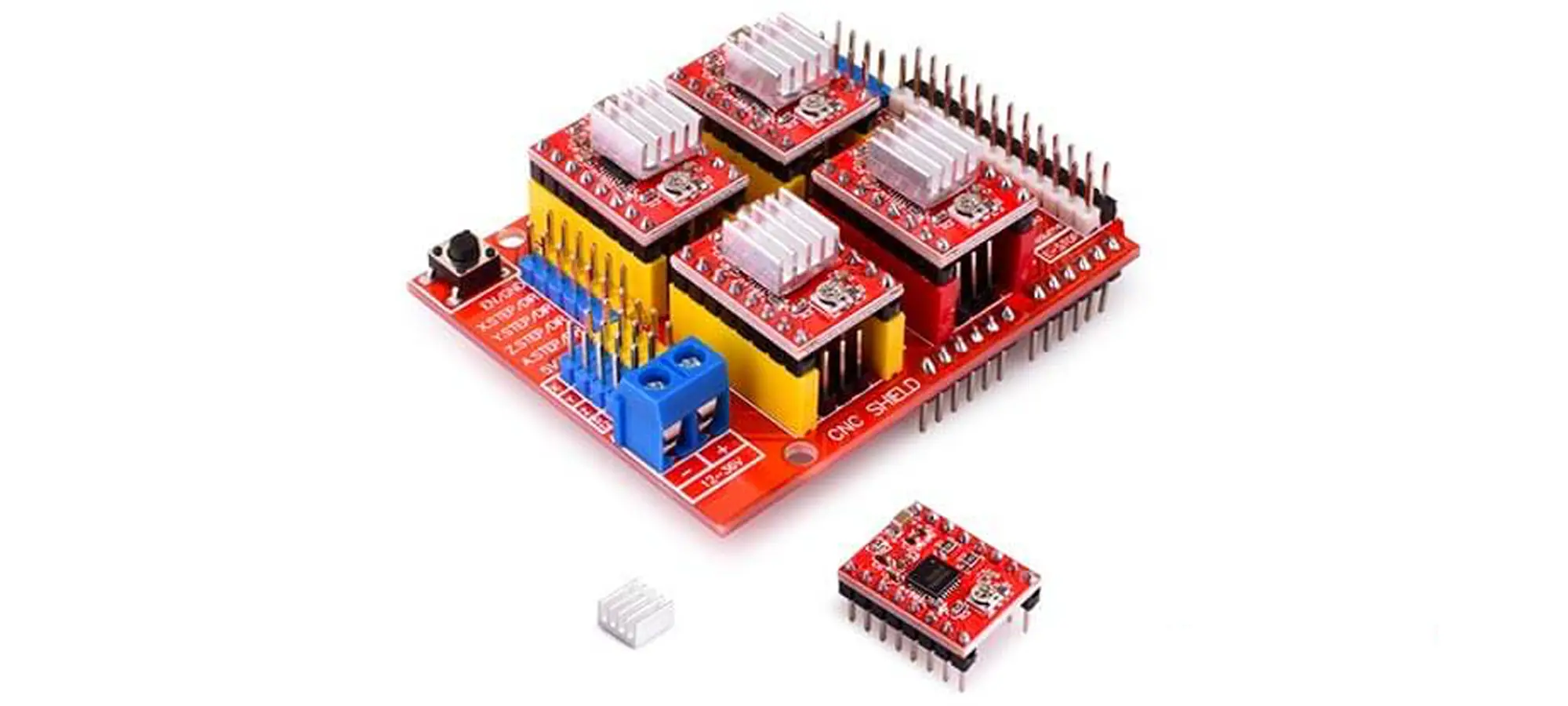
The V3.51 open-source CNC shields check all the boxes: simple to set up and use, has every one of the components you’d need, incredible help, and has a reasonable cost. In particular, it uses an Arduino Uno and requires a 12-36 volt power supply to drive the motors.
It runs the usual GRBL Arduino CNC firmware. (GRBL firmware is effectively modified to the Arduino and has tons of community support.) Supporting up to four module stepper engine drivers, this safeguard can clone a pivot assuming you needed to drive one hub with two engines.
There are additionally header pins for up to six possible switches, two for each axis. Micro-stepping is supported down to 1/32 relying upon the stepper drivers used.
At last, jumpers can be used to set the micro-steppers, axes duplication, and step bearing on the board. In spite of the fact axes, duplication, and step courses can be changed in programming, having the alternative on the board is a bonus.
This board is available as a kit for $20, which incorporates the board as well as the stepper motor drivers. This design is open-source so there are many duplicates of different quality and value, a couple of decent alternatives are Elecrow and Protoneer. Look at the myriad of YouTube videos and guides if you need any help.
- Type of shield: Arduino Uno
- Type of Firmware: GRBL
- Modular stepper motor drivers: 4
- Limit of switches: 6
- Micro-stepping: 1/32
- Pros: Extra I/O for probing and spindle control
- Cost: $20 (with stepper motor drivers and Arduino)
Keyestudio V4.0
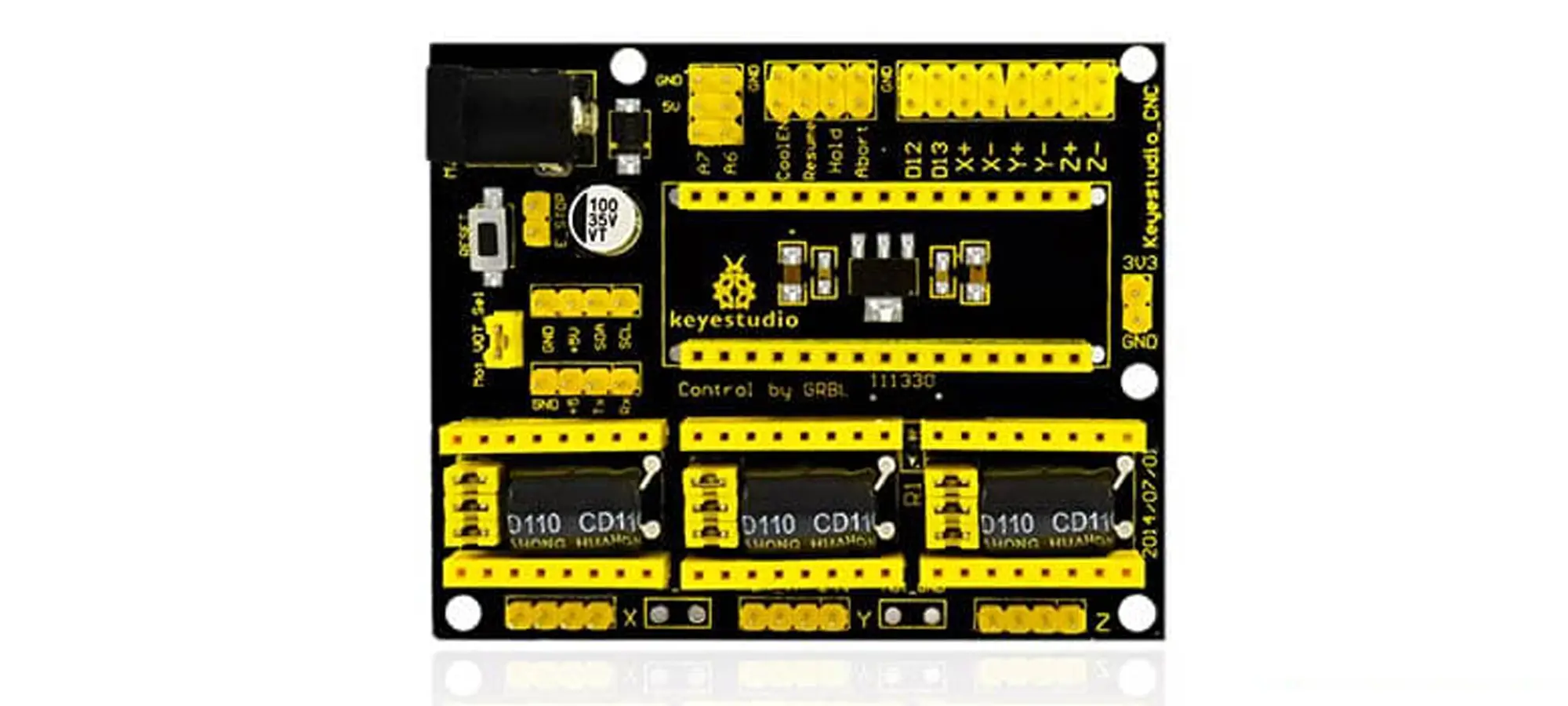
The Keyestudio safeguard uses an Arduino Nano to drive up to three stepper engines. It has a large portion of the provisions of the past greater board, yet for certain exemptions. The board runs off a 12 V stockpile through the barrel jack connector and on GRBL firmware.
You can connect up to the three most loved stepper engine drivers and there are header pins for six limit switches. This shield is only compatible with micro-stepping down to 1/16 when compared with 1/32 of the past board. Regardless, for most applications, 1/16 is adequate.
With three stepper motor drivers and the Arduino Nano, the Keystone shield can be found online for about $15. This design is additionally open-source so there are many duplicates of fluctuating quality and cost.
- Type of shield: Arduino Nano
- Type of firmware: GRBL
- Modular stepper motor drivers: 3
- Limit of switches: 6
- Micro-stepping: 1/16
- Pros: Popular board with a vibrant community
- Cost: $15 (with stepper motor drivers and Arduino)
RepRap RAMPS 1.4
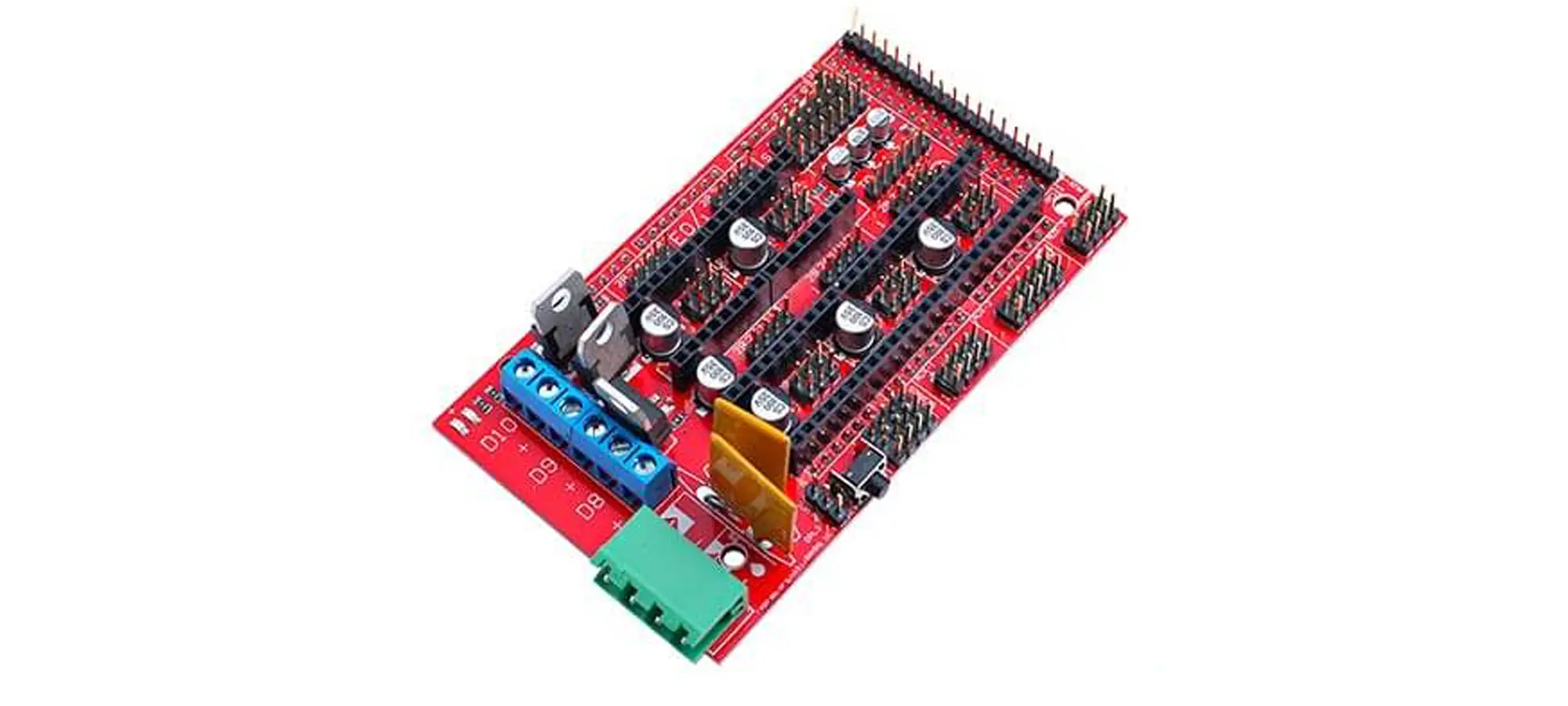
RepRap’s RAMPS 1.4 board is a feature-packed Arduino Mega shield intended for use with 3D printers. In any case, it’s as yet an incredible choice for CNC machines and can deal with up to five stepper engines.
These packs generally incorporate a compatible LCD display. Like the past shield alternatives, it’s an open-source configuration so be careful of duplicates of quality and cost.
- Type of shield: Arduino Mega
- Type of firmware: Marlin
- Modular stepper motor drivers: 5
- Limit of switches: 6
- Micro-stepping: 1/32
- Pros: Some community support for use as a CNC shield, tons of extra features
- Cost: $30 (with stepper motor drivers and Arduino)
All-in-One Options
The above boards all use “StepStick” stepper motor drivers that can be effectively connected to the header pins. There are a couple of mainstream choices with regards to stepper motor drivers.
The most well-known choices are the A4988 and the DRV8825. These two options are extremely simple and broadly used; the two of them are sold online in packs of four or five for about $10.
The principal contrast is that the DRV8825 can give slightly more power supply to the stepper motors, is compatible with micro-stepping down to 1/32, and can be utilized with up to a 45 V power supply. The A4988, then again, can go down to 1/16 in micro-stepping and has a maximum power supply of 35 V.
Assuming you need the absolute best in stepper drivers, the SilentStepStick series is the best choice. For about $8 each, you’ll get a custom stepper driver with a coordinated circuit that produces sine wave step signals for stepper motor activity in relatively less noise. There’s additionally micro-stepping down to 1/256, stall, and short circuit detection.
Synthetos gShield V5
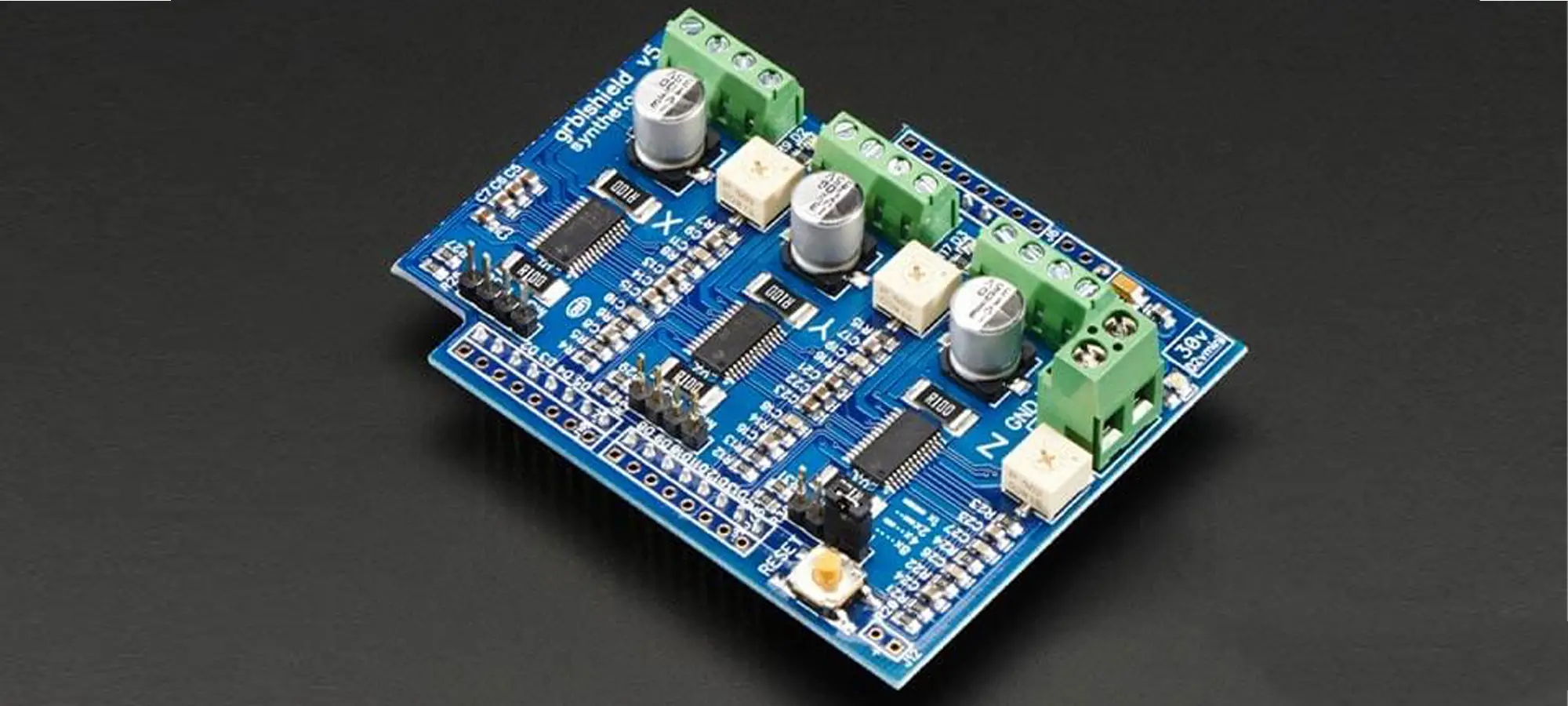
The gShield has an incorporated Arduino Uno. (These are somewhat more impressive than the previously mentioned DRV8825 StepStick drivers.) While you don’t have the alternative to change drivers like with different boards, they ought to perform well, as they are rated up to 2.5 amps.
This board highlights screw terminals for the power supply and stepper motors (most boards use header pins), so the gShield has safer connections. It additionally runs off 12-30 V and has header pins to pick the micro-stepping settings.
The gShield is the second most costly on this list, with the actual board setting you back at approximately $60. In spite of the fact that it’s double or triple different boards, you ought to get a higher form quality board with integrated stepper drivers.
- Type of shield: Arduino Uno
- Type of firmware: GRBL
- Integrated stepper motor drivers: 3
- Micro-stepping: 1/8
- Pros: Simple and straightforward board, has screw terminals for secure connections
- Cost: $60
Synthetos TinyG
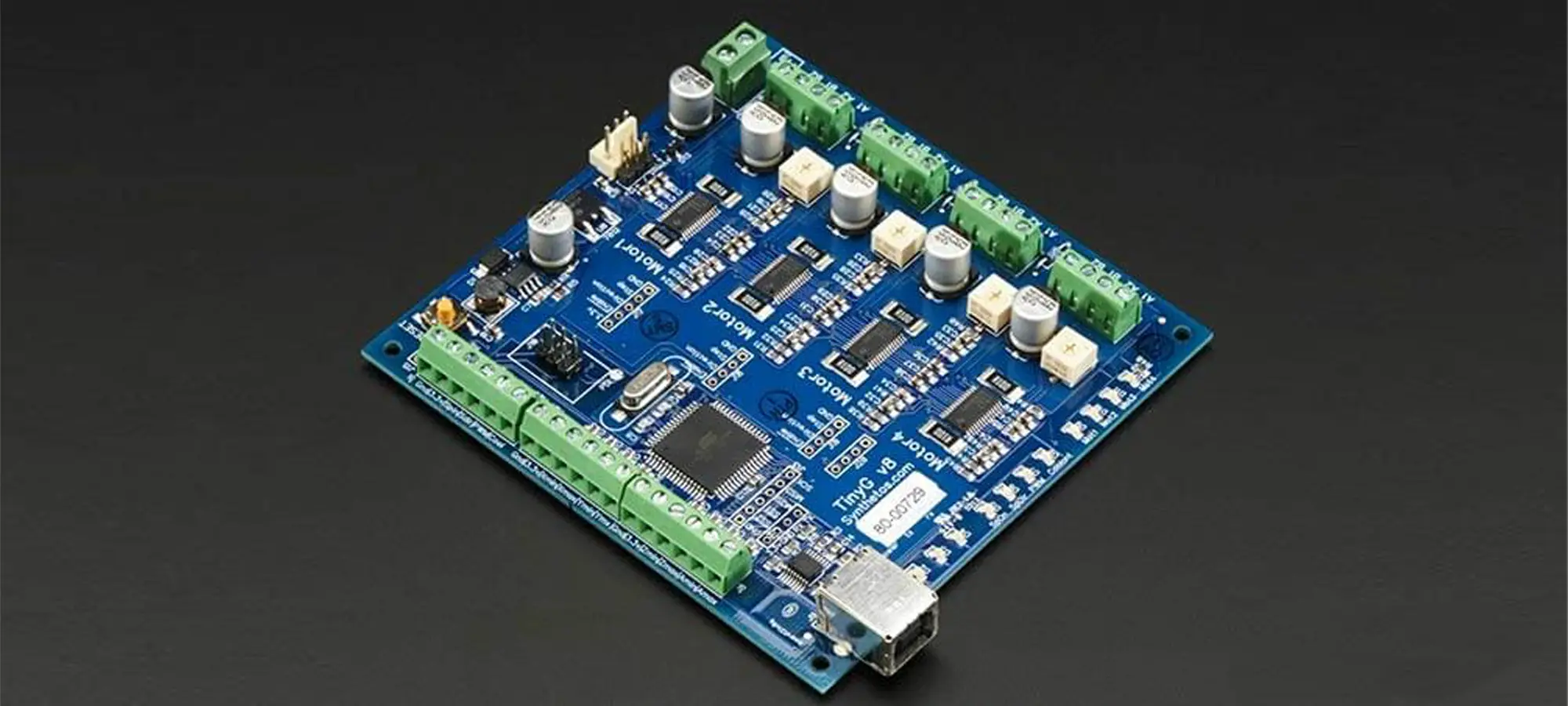
The TinyG from Synthetos is a supreme alternative with drivers that the gShield utilizes, however with a couple of additional firmware highlights.
With custom firmware, this board is the most costly of the bundle, setting you back about $160.
- Type of shield: Integrated Arduino Mega
- Type of firmware: GRBL
- Integrated stepper motor drivers: 4 (compatible with up to 6)
- Limit of switches: 6
- Micro-stepping: 1/8
- Pros: Custom smooth step firmware, up to 6-axis control, integrated Arduino
- Cost: $160
Best DIY CNC Routers Kits – Buying Guide
CNC Wood Carving – Best Routers/Machines
Conclusion
Picking the right CNC shield for your venture can be an overwhelming task. Since these boards can be utilized for almost any CNC application, the best board for you will rely upon your particular task and essential features. The good news is that plenty of the boards have comparable features, so we’ll be considering the contrasts between the choices.
What makes the Arduino CNC Shield an exceptional investment, when contrasted with a custom-made board, is that they are very simple to use, and can be easily plugged onto the highest point of a standard Arduino UNO board.
After this simple establishment, this easy installation, makers can utilize freely accessible GRBL programming to make HEX files and upload control speculations easily to the Arduino board.







